What is the Best Winter Food for Deer?
The best winter food for deer is woody browse.
A deer’s diet can include hundreds of plants. Most of a deer’s diet consists of woody browse and leaves of trees and shrubs.
The best natural deer food in winter is the tips of woody plants. The most tender and nutrient-rich parts of trees and shrubs, or, woody browse are the tips of the stems or, the new growth of the year as well as the terminal buds. Woody plants will concentrate lots of sugars in the bud so it is ready to grow vigorously in spring as soon as the sap begins to move through the tree. This stored energy is relished by deer.
How to Encourage More Woody Browse
To get more browse, you must cut the canopy and allow stump sprouts and new trees to grow. When sunlight reaches the forest floor after cutting, new plants will sprout from the seed bank. Most hardwood species will sprout from the stump, which is the most tender and nutritious of all twigs.
Why Are Stump Sprouts so Attractive to Deer?
When a tree is cut down, the entire root system is still alive beneath the ground. To survive, the tree must get stems up and growing so photosynthesis can take place and keep the tree alive. These fast-growing stems are full of nutrients and, since they are new growth, they haven’t lignified yet so they are highly palatable. Like eating a tender restaurant grade beef vs a steak from a ten year old deer.
Planting Winter Food for Deer
If you have some forest openings, old fields or agricultural land you want to put into food plots, the best winter food is cereal grains like winter wheat and rye. A wheat field with some cold-tolerant brassicas like kale and collards is an excellent winter food plot. Add some crimson clover for added lush growth in the early spring when deer need to recover from nutrient deficit.
Cutting Browse for Winter Deer Food
Another way to get food in front of deer in winter is to cut some trees. Timber Stand Improvement or TSI can be done in the winter to provide a source of twigs and buds. Hungry deer sometimes come to the sound of a chainsaw and will stand in the snow waiting for a tree to come down so they can munch on it.
Species such as maple, ash, basswood and young oak are readily eaten and can make the difference between survival and starvation in a rough winter.
Trees to Plant for Winter Food for Deer
Deer up in the Northern climates eat lots of cedar. Arborvitae planted for ornamental reasons often have a browse line on them and look top heavy from deer consistently feeding on the leaves. Blackberry stems are browsed heavily as are all species of dogwoods, elderberry, viburnums. These are all native and will grow in most sights, given enough sunlight. They must be protected from deer while they get established. Without fence or tubes, they will get devoured before they get to grow.
Prescribed Fire to Create Winter Food for Deer
A great way to encourage nature browse species to grow and feed deer is to use fire to top kill young trees and encourage resprouting plus new trees and shrubs to come up from the seed bank. Burning in combination with harvesting to open up the canopy will provide a flush of new growth by opening the canopy and exposing mineral soil by removing the duff layer.
Forest Management Makes Better Winter Deer Habitat
Management in the form of thinning, Rx fire, planting, fencing deer out of regeneration areas, running forestry mulchers, applying herbicides to invasive plants deer don’t eat. These are all forest management techniques I use on client properties to increase the health and abundance of game and non game wildlife species.
My Favorite Food and Cover Plants for Deer and Other Wildlife
White Cedar is a favorite of far north deer yarding areas. It provides protection from wind and deer eat the outer leaves all winter to stay alive.
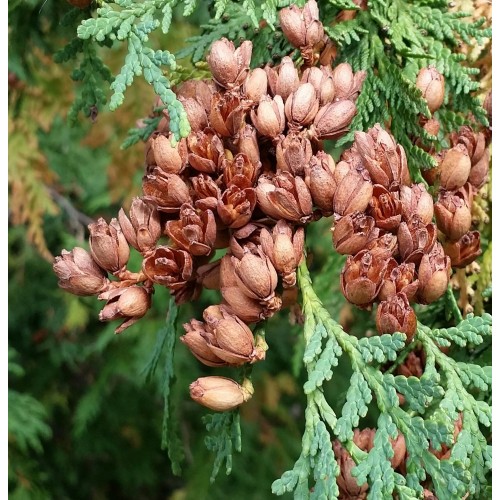
Dogwoods – most if not all varieties of dogwood are eaten by deer. The shrub dogwoods provide fruit as well as tender stems for browsing in winter. Deer eat the leaves of dogwood in the growing season.
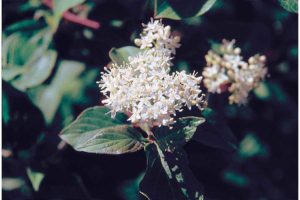
I have had success with planting Flowering Dogwood in upland ground, Redosier Dogwood in wetland, Silky and Gray Dogwoods in poor soils. Once established, birds will distribute the seeds by eating the fruit. They also have beautiful flowers in spring and are great looking shrubs.
The viburnums are excellent native shrubs as well. Cranberry, maple leaf viburnum are common.

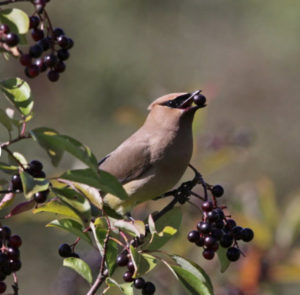
Elderberry is easy to grow in a wide variety of soils. It produces large quantities of soft mast and has medicinal value and is edible by humans. It creates a canopy shrub great for deer bedding areas.
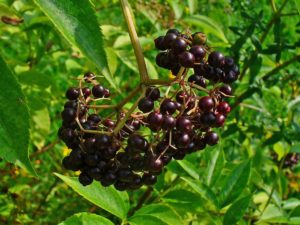
Chokecherry, a member of the Prunus genus is a good native plant that grows well in sunny spots on high forest ridges. I have seen these small trees grow large in some poor soil and produce tons of fruit.
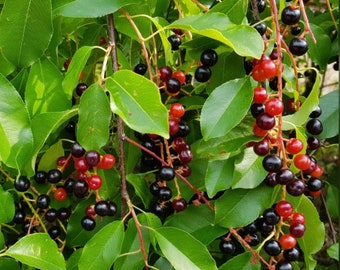
Greenbriar is a great plant to have on your property to provide emergency food for deer in winter. It vines up above snow heights and stays green though the winter months and is very nutritious. I dont know if it can be purchased to plant but it should be protected if you have it in your woodlot.
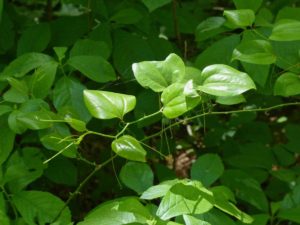
Serviceberry is easily seen in early spring as it is the first tree to flower in PA. The stump sprouts of serviceberry are devoured in winter when stressed trees try to put up sprouts at the root collar. It is a small tree that bends toward the light when it grows and can be a great addition to your wildlife thicket.
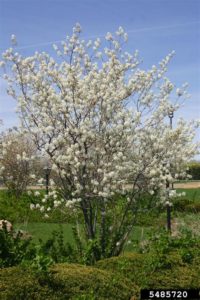
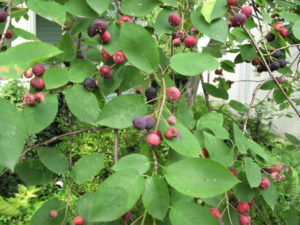
Winter Food Plots
Food plots planted with corn, soybeans, brassicas, winter wheat, annual clovers, winter rye will get deer through the winter in great shape. The only problem is most properties don’t have the room it takes to grow the quantity needed to feed all the deer. Also, deer have to come out into a field where the cold wind pulls more energy and warmth out of the animals.
Food plots should always be looked at as a supplement to good forest ecosystem structure. A healthy forest with hard and soft mast, low shrubs, vines and trees with tender stems, bracken ferns, winterberry, greenbriar and the like will support deer and keep them in great shape.
By keeping deer numbers in balance with the productivity of the range, they will always have enough to eat.
The problem here in Pennsylvania is that deer numbers were so high for so long, they destroyed their native food sources. In order to restore these foods, we have to do some serious rehabilitation of the forest ecosystem. Practices such as fencing, fire, planting, herbicides and TSI and regenerative logging will go a long way toward building a forest that will sustain plenty of wildlife.
